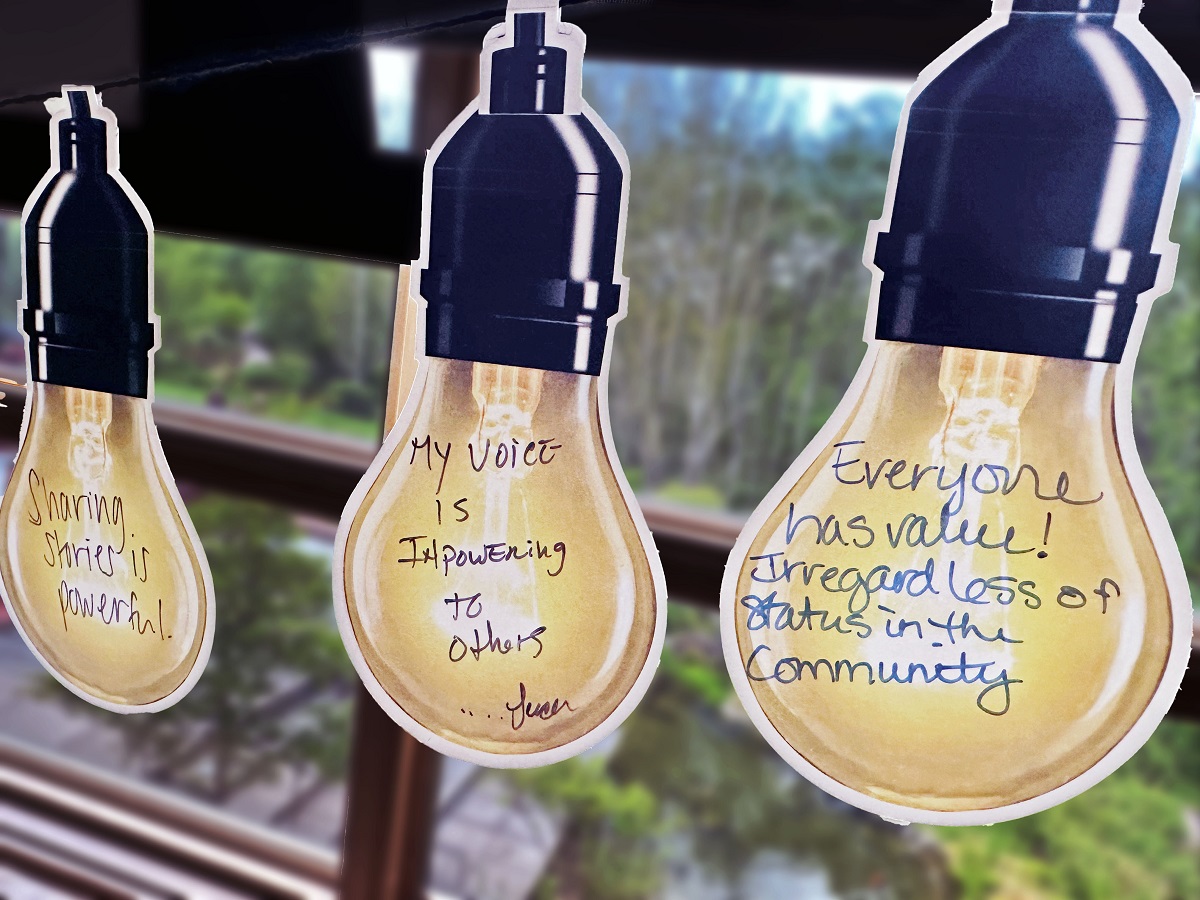When communities make sense of the data, needs are truly understood

When real people with lived experience are involved in policy making, communities thrive. That is the belief behind sensemaking, a mixed method research approach to data collection and storytelling that helps communities better understand their own needs and challenges — while also giving policymakers deeper insight into the lived realities shaping specific problems.
Sensemaking blends data analysis with personal narratives to uncover patterns in how groups of people experience social systems. Researchers at the Center for Public Partnerships and Research (CPPR) use the sensemaking approach to breathe life into data.
“In sensemaking, you are unearthing and making sense of complex issues by hearing from individuals and looking for patterns in collective experiences,” said Jenny Flinders, a research project manager at CPPR. “It's a collaborative grassroots way of doing things and a really successful way of generating ownership in a project.”
The process begins with a partner, often a government agency, seeking to understand the experiences of the population it serves, with the goal of improving programs, policies, or outcomes. Survey results are combined into a report shared with partners and community members during sensemaking sessions. Although CPPR presents the results, it is the partners and community members themselves that make sense of what the results mean and use them to come up with plans of action, and hopefully, meaningful and lasting policy.
“We do everything we can to stay as connected with organizations at the ground level as we can,” Flinders said. “It’s people in the community who are reaching out to folks and making sure that we're getting a diverse set of voices that participate.”
CPPR, a center within the Achievement & Assessment Institute at the University of Kansas, has partnered with agencies for sensemaking projects in multiple states and tribes. Universal Prevention for Strong and Thriving Families, or Family Strong, is one of the multiple projects that CPPR is working on in Kansas, and one that effectively used sensemaking to connect with the communities.
Headed by CPPR, the KU School of Social Welfare, the Kansas Department for Children and Families, and local community-based agencies, Family Strong is a demonstration project in eight southeast Kansas counties that aims to implement preventative strategies and initiatives to advance universal support for families and promote help-seeking in the communities.
Strategies include expanding universal case management services, offering free high-quality legal services, creating a network of service providers, and introducing a community outreach liaison. At the root of all these initiatives is the idea of meeting people where they are and involving them in the process of finding solutions.
“Sensemaking has allowed us to have a better, deeper, richer understanding of how real people in the community actually perceive what the problem is or what the solution for it might be,” said CPPR Director Jared Barton. “Yes, sensemaking is another survey to some extent if you strip it all down, but it’s a different approach. Sensemaking is more about understanding your experiences and what that means to you or your community.”
Barton said that before the sensemaking process, there were assumptions that people weren’t seeking help due to shame. However, after multiple conversations with Kansans, staff learned that it wasn’t that people are too proud, it’s that there was a lack of awareness or that the services that existed weren’t meeting the community’s needs. The experience reminded CPPR researchers of the power of community involvement and why bottom-up models that focus on people first lead to better results.
“It changed our design of the interventions and the ways that we understood our evaluation and how we look at data,” CPPR Associate Director Kaela Byers said. “Once we got their insight and reflections on what the results meant in their communities, it gave the data meaning that we hadn't considered.”
The sensemaking process continues even after the surveys and data collection are completed through continued sensemaking sessions with community members and through downstream initiatives and policies born out of the reports. This continued community engagement is what really sets sensemaking apart.
“You can't just parachute in a service or a program and expect that it's going to help in the long run,” Barton said. “When community members are the ones championing these ideas and the values, then the solutions will be more sustainable and survive and have longer-term impact.”